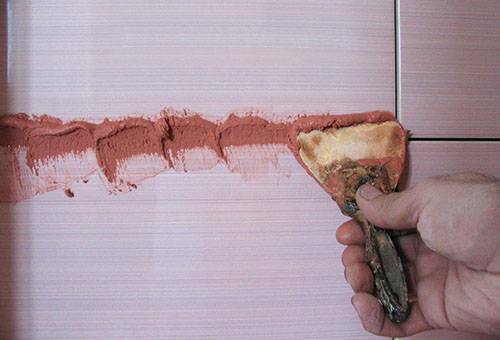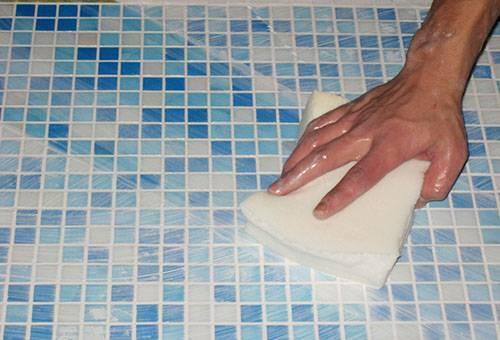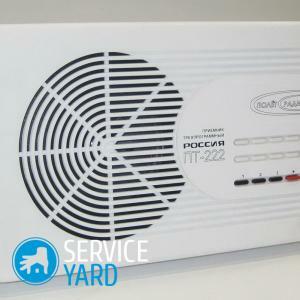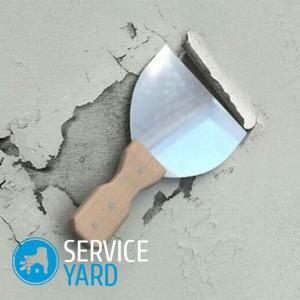Content:
- Types of contamination
- Than to wash porcelain?
- Removing dried construction mixes
The joy of finishing repairs in the bathroom and kitchen is overshadowed by the need to clean all construction debris and dust left after work.

Types of pollution
What can get on the tile and porcelain in the process of repair:
- cement;
- sealant;
- paint;
- mounting foam;
- gypsum;
- putty;
- plaster;
- tile adhesive;
- primer;
- grout for tile joints.
Almost always, these substances and building mixtures can be removed from the surface of the tile simply by a damp cloth, if you do it on fresh tracks, until they have had time to freeze. Old age spots are much harder to clean.
To remove all these impurities left after repair, there are specialized household chemicals. But, as a rule, you can do with more simple and inexpensive folk methods. It will be easier to wash the glossy smooth surface. If the porcelain is dull, porous or with a small relief, the dust can penetrate deep into it, and it will not be completely easy to remove it. How to wash porcelain stoneware?
If the masters worked neatly and removed all dirt on fresh tracks, then the cleaning will not be a problem after repair. Clean only construction dust. To begin with, it will be necessary to collect large debris and sweep the tile. But from the fine dust, which can not be removed with a broom, the tile is enough to wipe with water, into which you can add any mild detergent, soap, toothpaste or powder. The used rag or sponge should often be rinsed in water, the tile - washed several times, and at the end it is better to wipe dry, so that there is no stain left on the tile.
But there are other means.
- It is good to wash the tile and at the same time do without alcohol diverting spirits for windows.
- Water with the addition of juice or lemon essential oil cleans the surface well, moreover it gives it a shine and a pleasant aroma.
- You can achieve the radiance of tiles by wiping it with an aqueous solution of vinegar.
- Fine polishes and cleans glossy tiles.
Advice
Any aggressive cleaning agent is recommended to check for its effectiveness and safety for porcelain stoneware somewhere in an inconspicuous place and only then try to wash them all the room.

Remove dried building mixtures
Any similar substances from the surface of granite can be removed mechanically - some sharp object, a construction float or sandpaper. However, there is a risk of damaging the glazed tile coating, so it is better to resort to alternative methods.
- Tile glue is recommended to be soaked beforehand if possible, putting a damp cloth on it, and then to try to wipe it off. For polymer adhesives, a rag is wetted with solutions of vinegar, ammonia or acetone. Against epoxy glue is really effective only solvent, folk remedies are unlikely to help.
- Adhering to the floor during the repair of lumps of cement, putty, etc., as well removed mechanically. They can be scraped with a knife, old scissors, metal or plastic spatula. Large pieces are easily separated from porcelain stoneware even with hands.
- But the paint is much harder to scrape off. It is better to dissolve it with substances designed specifically for this type of paint. Water-emulsion dyes are easily removed with a damp cloth, and acrylic and oily dyes are solvents like "White Spirit".If the stain is old enough and the first time is not rubbed off, it is recommended to put a cloth soaked in a solvent on it for a while.
- To facilitate the rubbing of the grout after repair will help wet the tiles before rubbing the tile joints. In addition, with tiles with a smooth surface, it is much easier to remove. The smoothed grout should first be removed simply with a damp cloth or a hard sponge, and if this does not help, use any acid-containing liquids and powders. It can be as a means of household chemicals, and self-prepared acid solutions. But on some types of tiles, for example, having a metallized surface, such agents can leave bright spots.
- Whitewash is removed from the porcelain in several stages. To begin with, it is abundantly washed with water, then wipe the most contaminated areas with a sponge and detergent, and then thoroughly wash it off.
If the glaze of the tile is thick enough, then without any fear for its integrity, you can use any abrasive detergents and even ordinary soda. They are effective even against stale impurities, because they affect them mechanically.
When choosing a cleanser for cleaning, it should be remembered that all solvents, acidic, alkaline or chlorine-containing preparations are very aggressive for the skin, so work with them should be in gloves and closed clothing.



